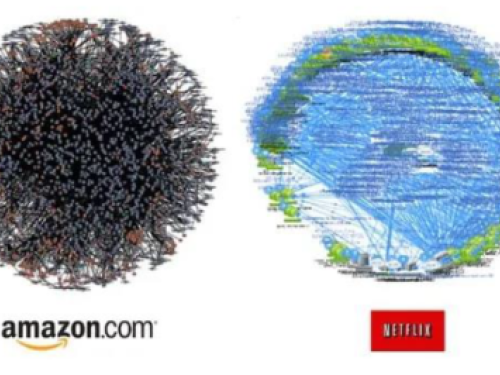Beyond the Buzz: What Money 20/20 Revealed About AI, Trust, and the Future of Financial Technology
When you walk into a conference like Money 20/20, you expect to hear bold ideas and predictions about what’s next. This year, however, one theme rose above everything else: AI wasn’t just a topic, it was the conversation. It was on every panel, every demo, every quiet exchange between industry peers. It’s no longer hype, it’s a strategic question: how to use it, govern it, and scale it responsibly.
I’ve spent years working with executives across fintech and enterprise technology, and I’ve never seen AI discussed with this level of depth and realism. What used to be a buzzword has become a boardroom topic, shaping decisions around risk, compliance, and growth.
What follows are a few reflections from this year’s event and what it means for the future of technology, trust, and the organizations building both.
AI Everywhere and in Everything
AI isn’t coming. It’s here, and it’s everywhere.
It has moved from an experimental layer to the structural foundation of modern financial systems. From fraud detection to customer service, from credit analysis to operational efficiency, AI is becoming the invisible infrastructure behind almost every digital interaction.
The conversation is no longer about if AI will play a central role, but how deeply it should be integrated into the ecosystem.
McKinsey estimates that AI could generate up to US$1 trillion in additional annual value for global banking, primarily through improved risk modeling, process automation, and hyper-personalized customer experiences.
The potential is massive, but so are the stakes.
The operationalization of AI at that scale introduces new complexity: models that adapt in real time, systems that make autonomous decisions, agents that learn faster than legacy controls can track. And that’s forcing the industry to rethink accountability.
When AI becomes an active participant in your operations, the question changes from “What can it do?” to “Who is responsible for what it does?”
Which brings us to the next big shift.
From KYC to KYA: Know Your Agent
Traditionally, banks and fintechs have focused on KYC (Know Your Customer).
But in an AI-driven ecosystem, the focus is expanding to KYA: Know Your Agent.
As intelligent systems become active participants in financial ecosystems, approving transactions, flagging fraud, recommending investments, they effectively become digital agents acting on behalf of the business and customers. And the question of identity, responsibility, and traceability is being redefined.
Who do you trust when the decision-maker isn’t human?
Who audits the agent that just approved a transfer or denied a claim?
This isn’t theoretical anymore. Companies are now working to implement agent authentication: frameworks that ensure every AI-driven action is traceable to a validated source and aligned with governance policies.
According to Deloitte, over 60% of executives in financial services are investing in AI assurance mechanisms, not to slow innovation down, but to make it accountable.
This shift from customer identity to agent accountability marks a turning point.
It’s where compliance meets technology. And it’s also where the conversation inevitably turns to something even bigger: governance.
The Rise of AI Governance
If AI is the engine, governance is the control system.
Every conversation I had at Money 20/20 came back to the same tension: how to keep innovation fast and responsible.
Regulators are moving quickly with the EU AI Act, the US AI Executive Order, Brazil’s PL 2338, and many others. Companies are realizing that compliance can’t be bolted on later. It has to be built into the model.
That means developing AI guardrails:
- traceable data lineage,
- model validation environments,
- bias and drift detection pipelines, and
- explainability layers for every decision output.
At Premiersoft, that’s a mindset we’ve carried into our work for years.
It’s also what led us to create our AI Lab: a dedicated environment for testing, validating, and challenging AI systems before they’re deployed in production. It’s where we explore not only what AI can do, but what it should do. Because the real value of governance isn’t in preventing innovation. It’s in enabling it safely.
And as AI grows more complex, safety becomes inseparable from another topic no one could ignore this year: security.
Security in the Age of Intelligent Systems
Every leap in capability creates a new frontier of risk.
AI is changing the way companies defend themselves, and the way they’re attacked. In one of the more sober panels, CISOs from leading fintechs agreed: AI-powered fraud and deepfake attacks are already outpacing traditional defenses.
For every model we train, someone else is training one to deceive it.
That’s why the shift toward adaptive security, systems that use AI to defend AI, is accelerating.
Gartner predicts that by 2027, over 60% of financial institutions will deploy autonomous cybersecurity systems capable of detecting and responding to threats in real time.
But no system, however advanced, can be trusted without a reliable foundation. Security depends on governance, and governance depends on knowing your data: where it came from, how it’s used, and who or what can access it.
It’s a full circle.
That’s why we see governance not as overhead, but as the foundation of resilience.
After the Event: Where We Go From Here
This year’s Money 20/20 didn’t introduce a new buzzword. It revealed a new mindset.
The industry has moved beyond the fascination stage of AI, it’s now about execution with accountability.
We’re entering an era where transformation depends not just on how powerful your models are, but on how responsibly they’re built, monitored, and evolved.
The future of fintech and enterprise AI will belong to those who innovate boldly but govern wisely.
In our work, we spend a lot of time thinking about balance. Through the AI Lab and our broader initiatives, we’re exploring how technology can stay creative without becoming chaotic, and how structure can make innovation stronger, not slower.
After all, this next chapter isn’t about building faster. It’s about building to last.
We’re optimistic about where this will lead. The fintech and enterprise landscapes are evolving into ecosystems where intelligence, trust, and transparency coexist by design. And we’re glad to be part of that shift, learning, contributing, and helping shape what comes next.
If you’re as fascinated by these questions as we are, follow us!
We’ll keep sharing what we learn as technology continues to redefine what’s possible.





